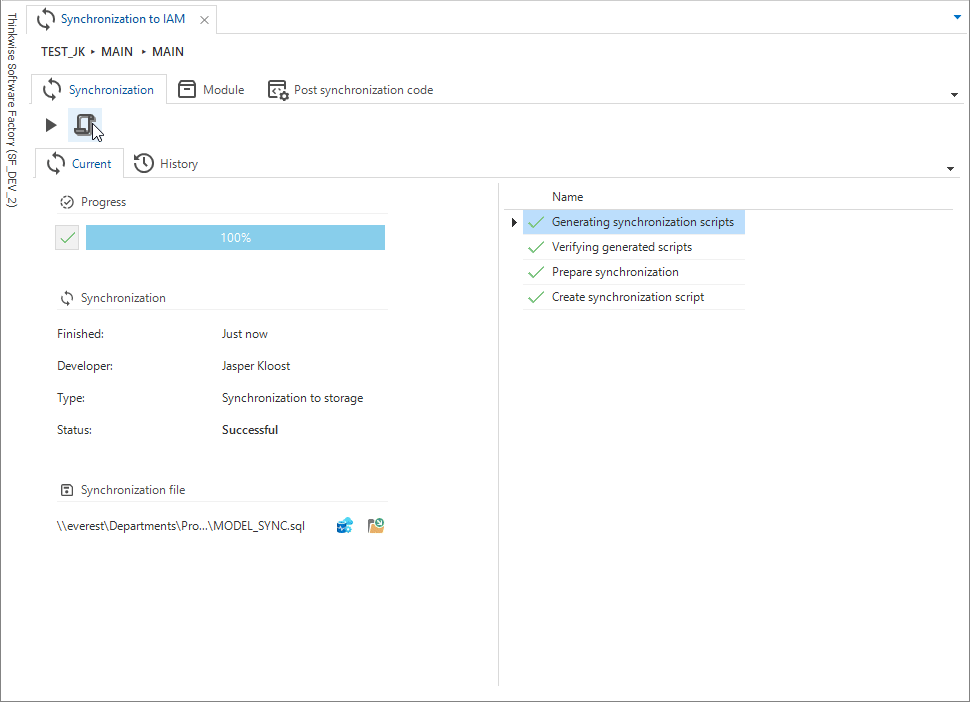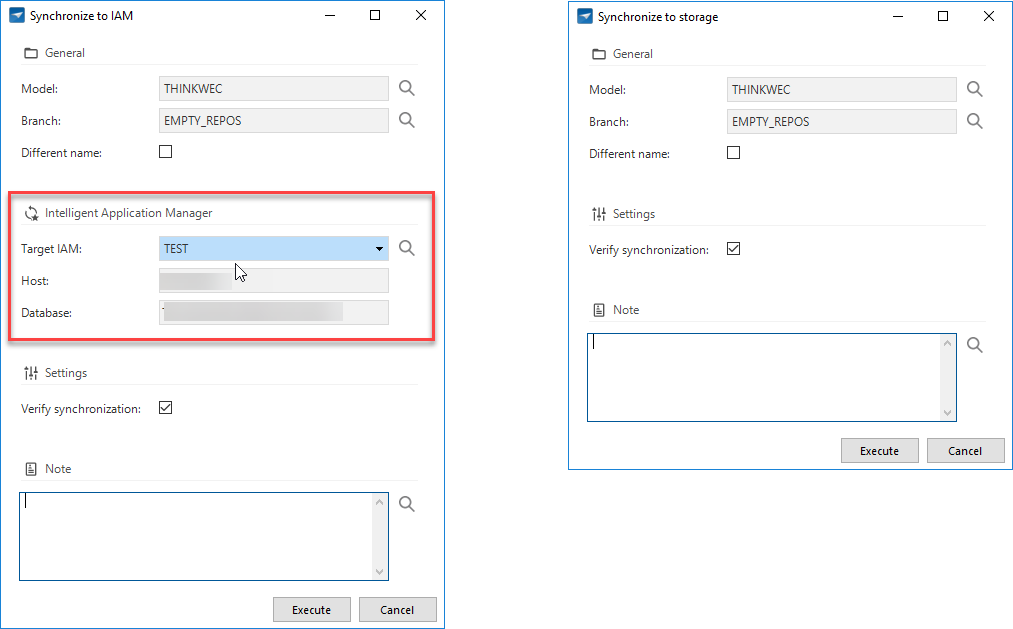If I understand correctly, the synchronization of IAM is now fully handled by Indicium?
So it is therefore not possible to open TSF (which is hosted in the cloud) from a target server (on-premise) and synchronize easily.
The only way that is now left is to save the script to disk, copy it to the target server and run it in SSMS.
That's not something to be happy about. It therefore takes a lot of time to make a small change in the application. Making a quick (urgent) change, such as role rights or a report adjustment, is not easy any more.
Why are you making the Software Factory more and more complicated???





